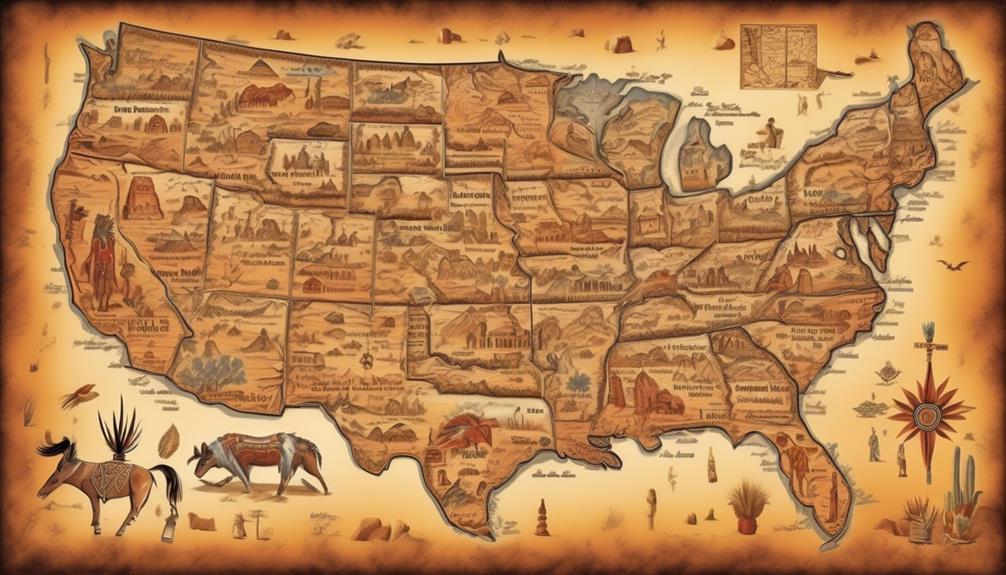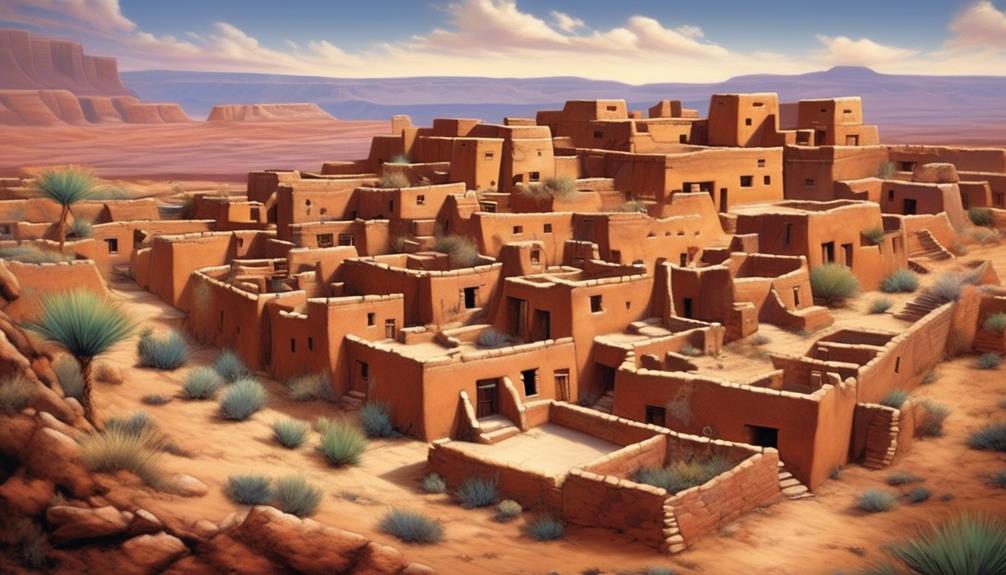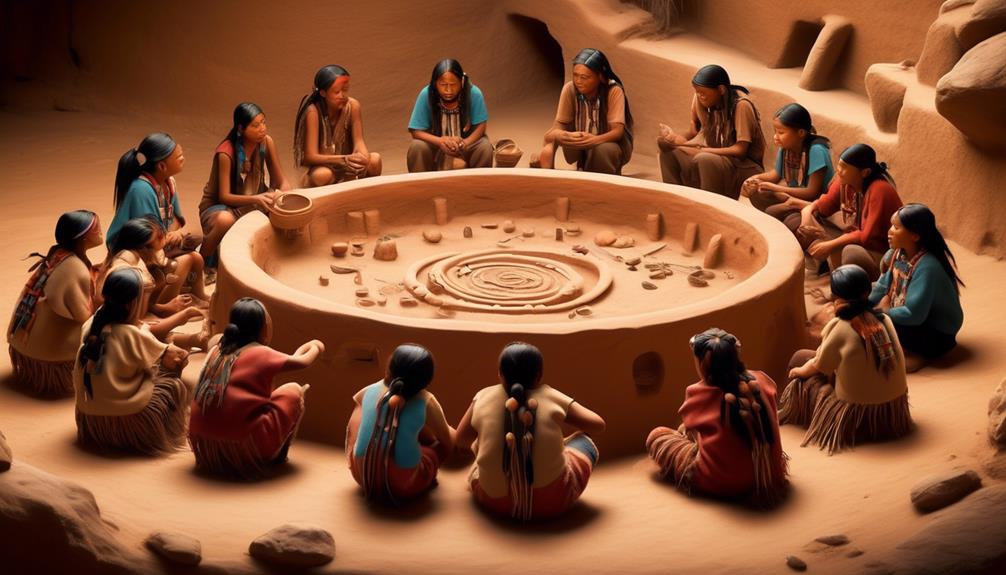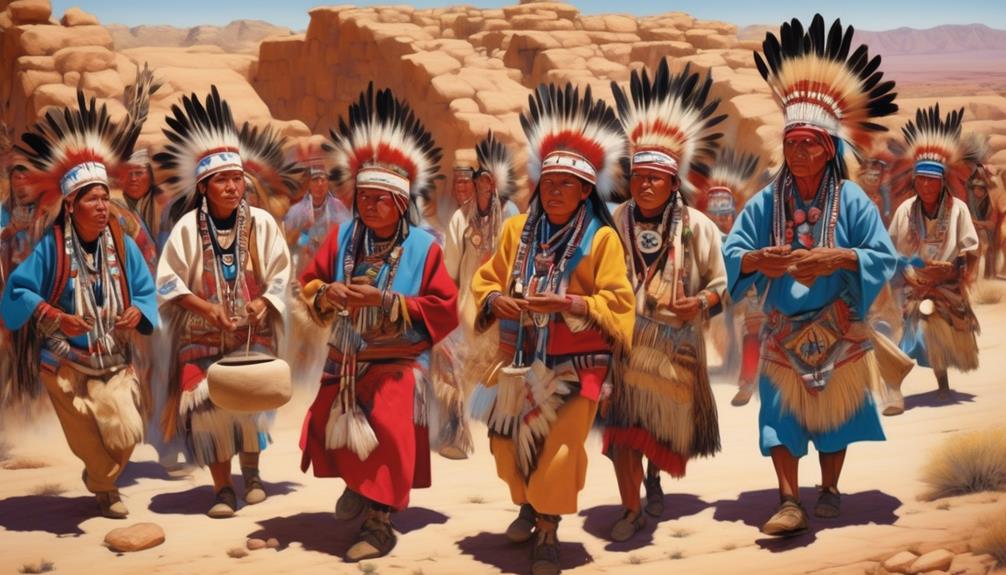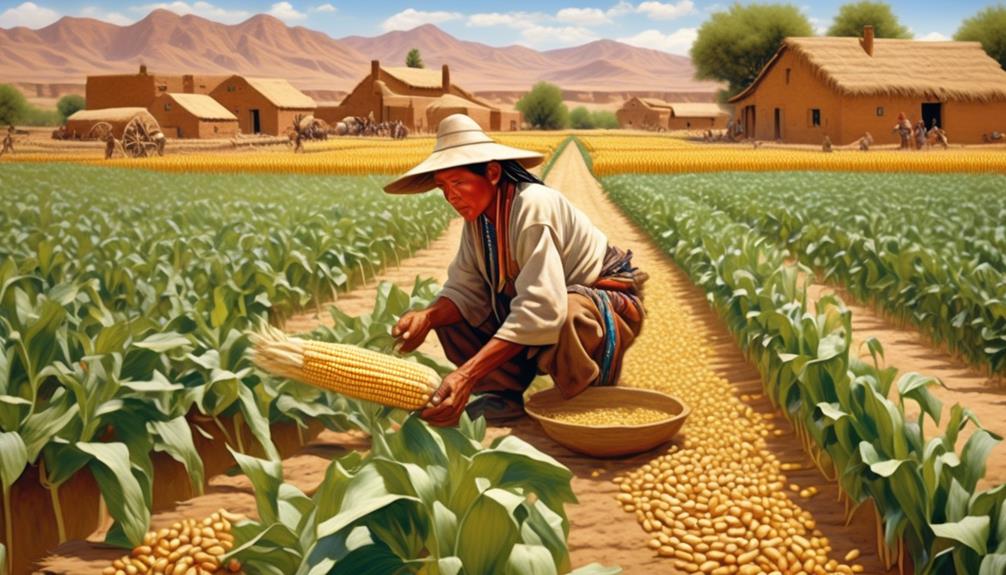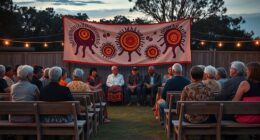The religious beliefs of the Hopi tribe were influenced by various neighboring tribes and historical events, a fact which may not be commonly known.
The Hopi tribe's religion was not isolated but rather shaped by interactions with other tribes and external forces.
From the Ancestral Puebloans to the impact of Spanish missionaries, the evolution of the Hopi religion is a complex interplay of cultural exchange and adaptation.
Understanding the intertribal connections that influenced the Hopi's religious practices provides a fascinating insight into the rich tapestry of Native American spirituality.
Key Takeaways
- The Hopi Tribe's religion is deeply influenced by the ancestral Puebloans, with shared traditions in agriculture, architecture, and ceremonial rituals.
- The Navajo Tribe has also influenced Hopi beliefs, particularly with the concept of hózhǫ́ (harmony, balance, and beauty) and through shared storytelling and ceremonial practices.
- The Hopi Tribe has a strong connection with the Zuni Tribe, with shared elements such as Katsina/Kachina spirits, kiva ceremonies, clan-based structure, and sacred mountains.
- Spanish missionaries had an impact on Hopi faith, introducing new rituals and beliefs, but the Hopi people exhibited resilience in preserving their ancestral traditions and resisting complete assimilation.
Ancestral Puebloans and Hopi Religion
The religious beliefs and practices of the Hopi Tribe are deeply intertwined with the traditions of the Ancestral Puebloans, reflecting a spiritual continuity that has endured for centuries. Puebloan traditions, including agricultural practices, architecture, and ceremonial rituals, form the foundation of the Hopi Tribe's religious identity. The Ancestral Puebloans, who inhabited the same region centuries ago, laid the groundwork for the spiritual framework that the Hopi people continue to honor and uphold today.
Hopi ceremonialism, rooted in the reverence for the earth and the natural world, draws striking parallels to the religious customs of the Ancestral Puebloans. Both societies place great importance on rituals that honor the changing seasons, agricultural cycles, and celestial events. The ceremonial calendar, intricate symbolism, and spiritual beliefs shared between the Ancestral Puebloans and the Hopi Tribe underscore the enduring legacy of Puebloan traditions in shaping the religious identity of the Hopi people.
Comparatively, the deep connection to the land and the sacred practices that govern daily life highlight the enduring influence of Puebloan traditions on Hopi religious beliefs and practices.
Navajo Influence on Hopi Beliefs
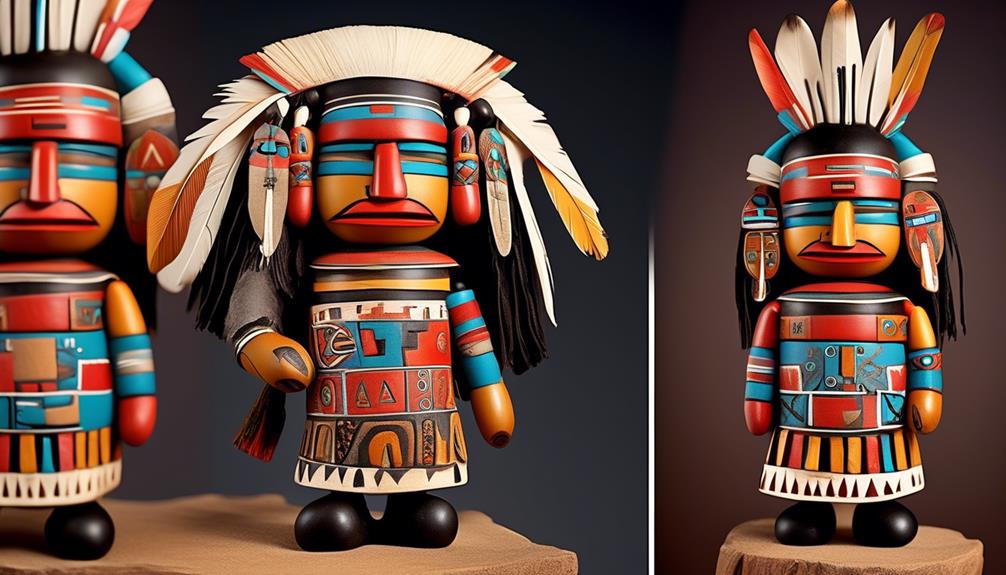
Influencing the religious beliefs and practices of the Hopi Tribe, the Navajo people have played a significant role in shaping the spiritual landscape of the region. The Navajo traditions have had a profound impact on Hopi spirituality, creating a complex interplay of beliefs and practices.
One notable influence is the Navajo concept of hózhǫ́, which encompasses harmony, balance, and beauty in all aspects of life. This concept has resonated deeply with the Hopi people, shaping their understanding of the world and their place within it.
Additionally, the Navajo tradition of storytelling has contributed to the rich tapestry of Hopi oral traditions. Stories passed down through generations have woven together elements of Navajo and Hopi cosmologies, creating a shared narrative that reflects the interconnectedness of the two cultures.
Furthermore, the ceremonial practices of the Navajo, such as the Night Chant and the Enemy Way, have intersected with Hopi rituals, influencing the way in which the Hopi approach healing, restoration, and spiritual renewal.
While the Navajo influence on Hopi beliefs is undeniable, it's important to recognize that the Hopi Tribe has also maintained its distinct cultural and spiritual identity. The interweaving of Navajo and Hopi traditions has created a dynamic and evolving spiritual landscape, demonstrating the resilience and adaptability of indigenous belief systems.
Hopi Tribe's Connection With Zuni Religion
Drawing parallels between the Hopi Tribe's spiritual practices and the Zuni religion reveals intriguing connections and shared cultural elements. The Hopi and Zuni tribes, both residing in the Southwestern United States, have a long history of interaction and cultural exchange, which is reflected in their spiritual beliefs. The Zuni influence on the Hopi Tribe's religion is evident in various aspects, including mythology, ceremonial practices, and spiritual symbolism.
| Hopi Tribe | Zuni Religion |
|---|---|
| Katsina spirits | Kachina spirits |
| Kiva ceremonies | Kiva ceremonies |
| Clan-based | Clan-based |
| Sacred mountains | Sacred mountains |
| Corn rituals | Corn rituals |
Both the Hopi and Zuni tribes revere Katsina/Kachina spirits, who are believed to possess great wisdom and power. Additionally, both tribes conduct ceremonial practices in underground chambers known as kivas, where they seek spiritual guidance and perform rituals. The clan-based structure of their societies and the significance of sacred mountains in their spiritual beliefs further demonstrate the deep spiritual connections between the two tribes. Furthermore, the reverence for corn and its role in rituals and ceremonies is another shared aspect of their spiritual practices. The Zuni influence on the Hopi Tribe's religion is a testament to the rich tapestry of cultural and spiritual exchange that has occurred among indigenous peoples in the Southwest.
Impact of Spanish Missionaries on Hopi Faith
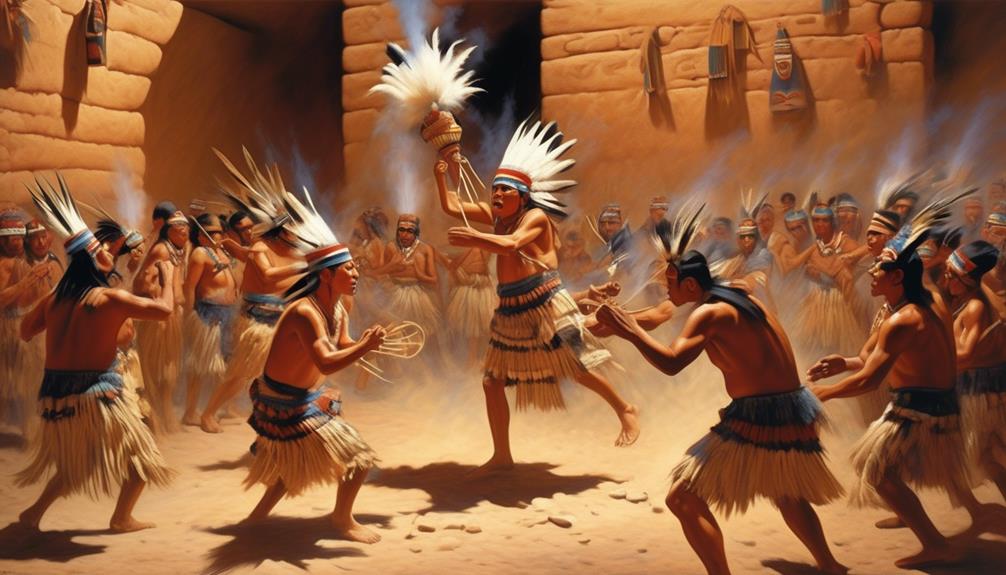
Upon encountering Spanish missionaries, the Hopi Tribe's traditional faith underwent significant transformation and adaptation that altered its spiritual practices and beliefs. The influence of Spanish missionaries on the Hopi faith was profound, leading to a complex interplay between the introduction of new religious concepts and the resistance to these changes by the Hopi people.
The missionaries sought to supplant indigenous spiritual practices with Catholicism, introducing new religious rituals, symbols, and beliefs to the Hopi Tribe. This encounter resulted in a syncretic blend of Catholicism and traditional Hopi beliefs, as the Hopi incorporated certain elements of Catholicism into their existing spiritual framework while maintaining aspects of their original faith.
Despite the missionary efforts, the Hopi people exhibited resilience in preserving their ancestral traditions and resisting complete assimilation into the new religious paradigm. This resistance is evident in the continued practice of traditional Hopi ceremonies and the perpetuation of their cultural heritage.
The impact of Spanish missionaries on the Hopi faith highlights the dynamic nature of religious interactions and the enduring strength of indigenous belief systems in the face of external influences.
Intertribal Exchange of Religious Practices
During periods of intertribal exchange, indigenous communities have often shared and integrated religious practices, fostering a rich tapestry of spiritual traditions. This cross-cultural religious exchange has led to spiritual syncretism, where different beliefs and practices blend, creating unique and diverse expressions of faith. Intertribal ceremonies have played a significant role in this exchange, serving as a platform for the sharing of rituals, songs, dances, and sacred knowledge. Through such interactions, cultural assimilation takes place, allowing for the preservation and evolution of religious traditions within and across tribes.
| Intertribal Ceremonies | Cultural Assimilation |
|---|---|
| Shared rituals and dances | Preservation of traditions |
| Exchange of sacred knowledge | Evolution of religious practices |
| Integration of spiritual beliefs | Blending of cultural practices |
The exchange of religious practices among different tribes has not only enriched the spiritual landscape but also fostered a sense of interconnectedness and mutual respect among indigenous communities. This intertribal exchange continues to shape and mold indigenous religious traditions, highlighting the importance of cultural diversity and the interconnectedness of all spiritual beliefs.
Frequently Asked Questions
How Did the Hopi Tribe's Religion Influence Their Daily Lives and Social Structure?
The Hopi tribe's religion had a profound influence on their daily lives and social structure. Their spiritual connection to the land and nature shaped their agricultural practices, communal living, and social hierarchy.
This influence on society fostered a strong sense of unity and collective responsibility. The rituals and ceremonies played a vital role in reinforcing social cohesion and maintaining order within the community.
What Role Do Sacred Sites and Natural Elements Play in the Hopi Tribe's Religious Practices?
Sacred sites and natural elements are integral to our religious practices, fostering a spiritual connection and community participation. These sites, such as the San Francisco Peaks, hold deep significance and are essential for our ceremonies and rituals.
Natural elements like water and corn are revered for their life-giving properties, shaping our beliefs and traditions. We honor these sacred spaces through our collective participation, reinforcing our cultural and spiritual identity.
How Do the Hopi Tribe's Religious Ceremonies and Rituals Contribute to the Preservation of Their Cultural Identity?
Our religious ceremonies and rituals are essential for cultural preservation. They hold immense spiritual significance and serve as a continuous link to our ancestral traditions. Through these practices, we honor our heritage and maintain the unique identity of our tribe.
The rituals also strengthen our sense of community and connection to the land. By passing down these traditions, we ensure that our cultural legacy remains vibrant and enduring.
What Is the Significance of Katsinas in the Hopi Tribe's Religious Beliefs and Ceremonies?
Katsina dolls hold significant spiritual and cultural importance in Hopi religious beliefs and ceremonies. These intricately crafted wooden figures represent ancestral spirits and are used in rituals and ceremonial dances to invoke blessings and protection.
The dolls are believed to embody the spirits of deities and ancestors, serving as messengers between the Hopi people and the spirit world. Through the use of katsina dolls, the Hopi tribe maintains a strong connection to their traditional religious practices and cultural identity.
How Has the Hopi Tribe's Religious Beliefs and Practices Evolved Over Time, and How Do They Continue to Adapt to Modern Influences?
We have seen the evolution of the Hopi tribe's religious beliefs and practices over time, marked by adaptation to modern influences while preserving their cultural heritage.
The incorporation of new elements has allowed for the continuation of their traditions, demonstrating a remarkable ability to adapt without compromising their identity.
This evolution reflects the Hopi tribe's resilience and commitment to honoring their ancestors while navigating the complexities of the modern world.
Conclusion
In conclusion, the Hopi tribe's religion was influenced by a variety of tribes, including the Ancestral Puebloans, Navajo, Zuni, and Spanish missionaries.
This intertribal exchange of religious practices is like a beautiful tapestry, woven together with threads of belief and tradition from different cultures.
The Hopi people have embraced these influences and created a rich and diverse religious tradition that continues to thrive today.
